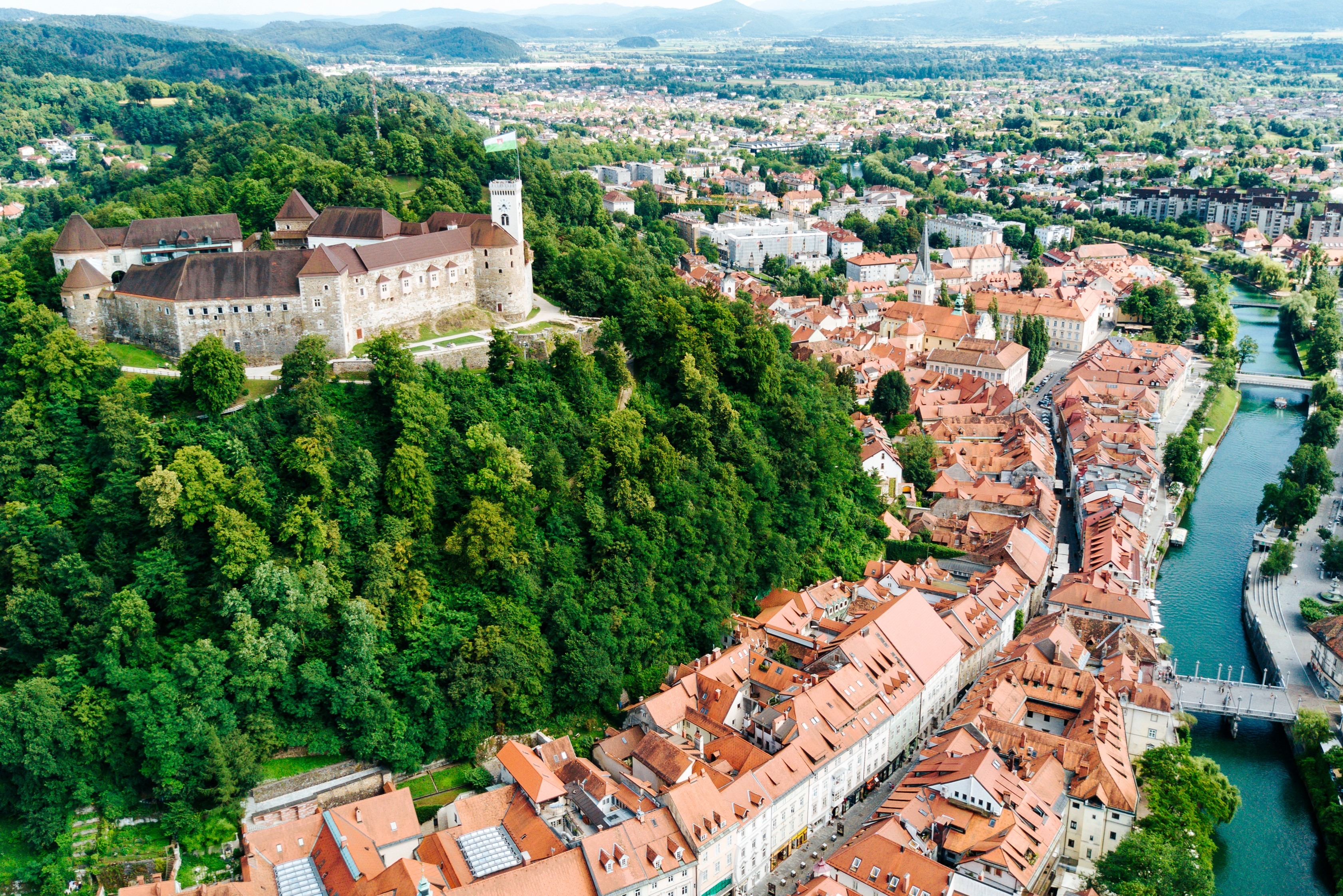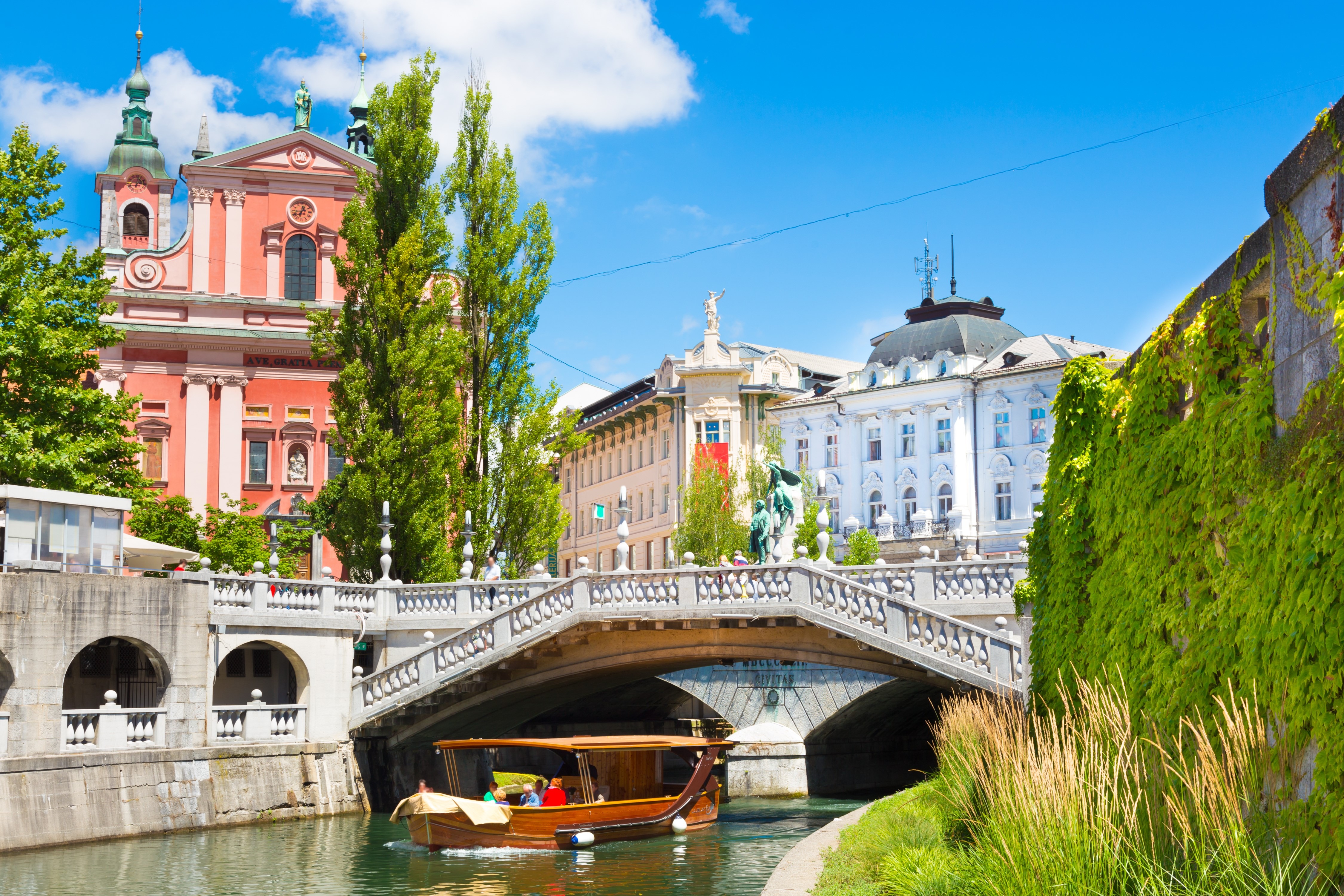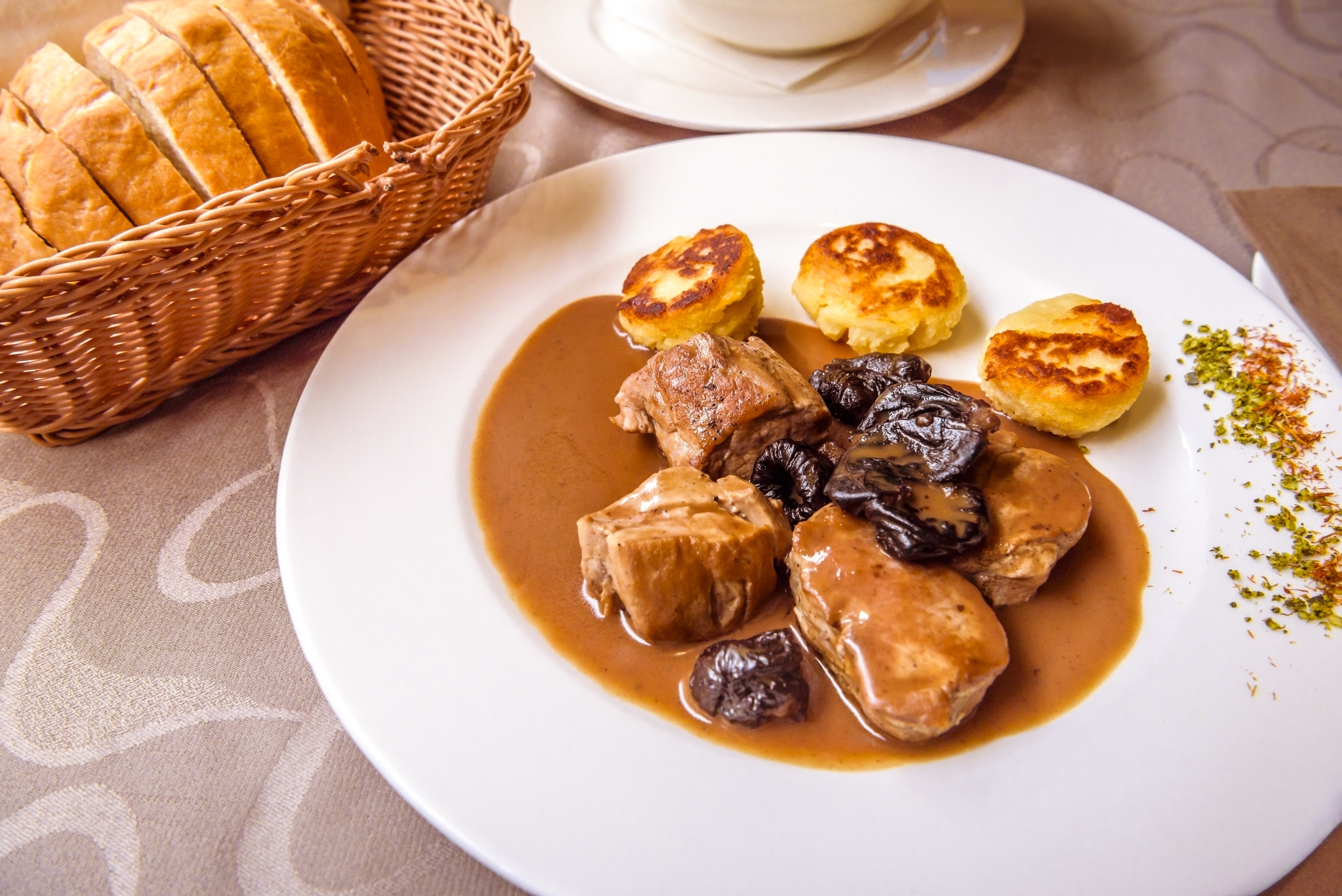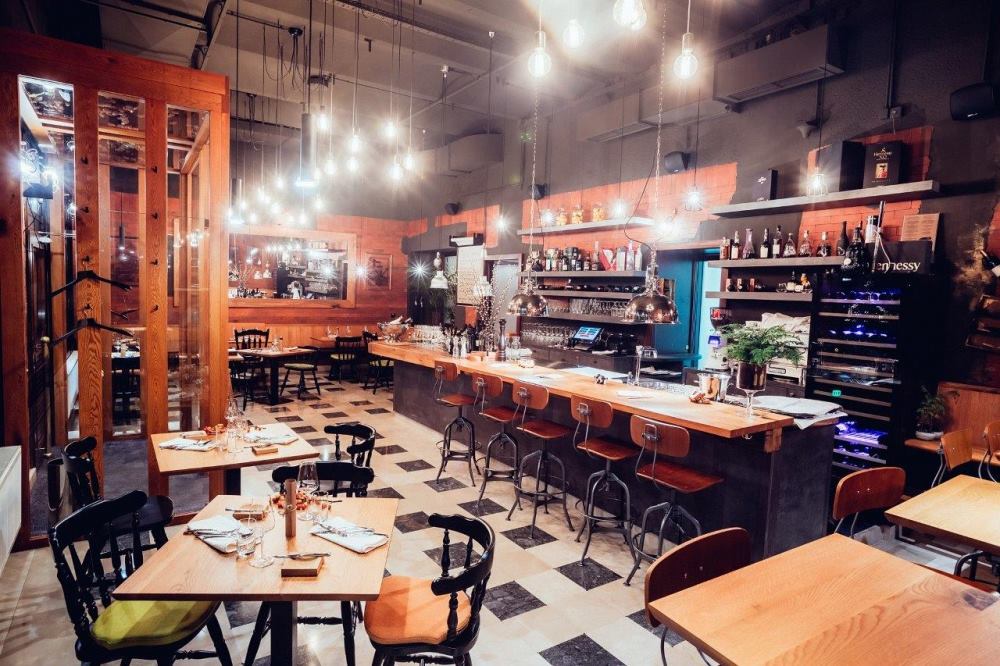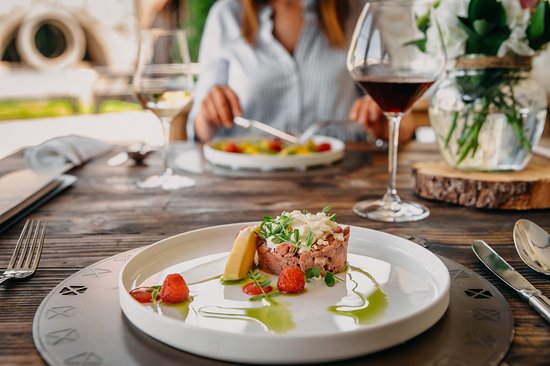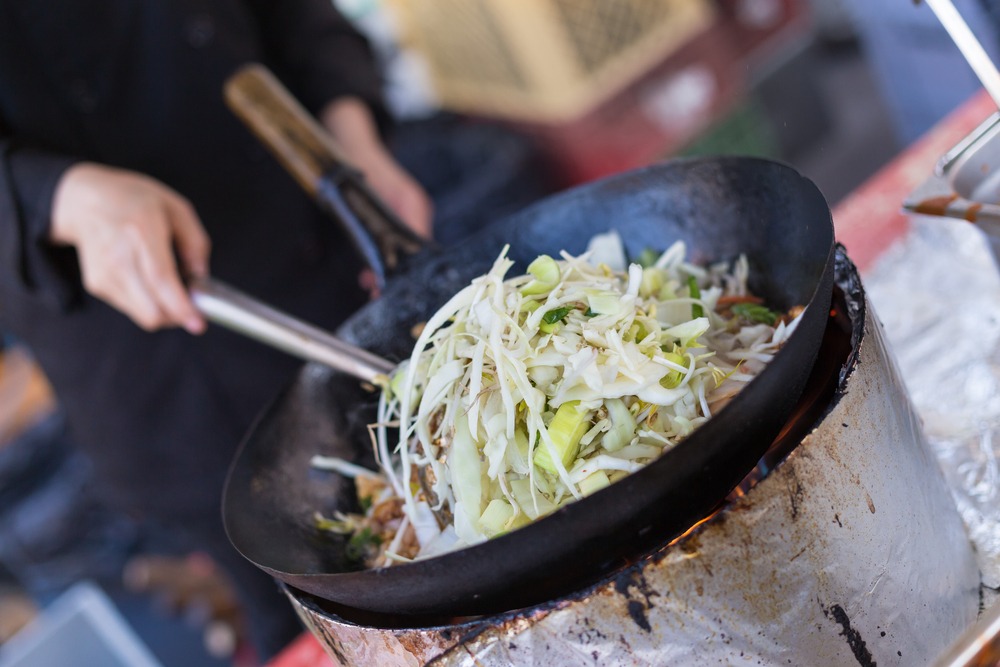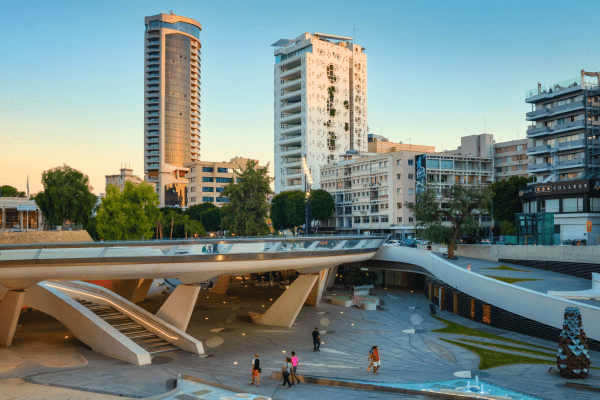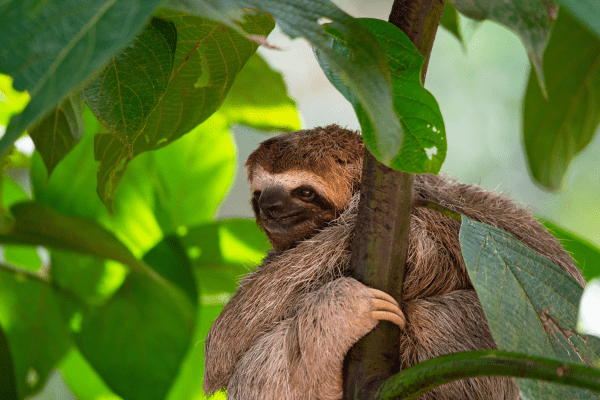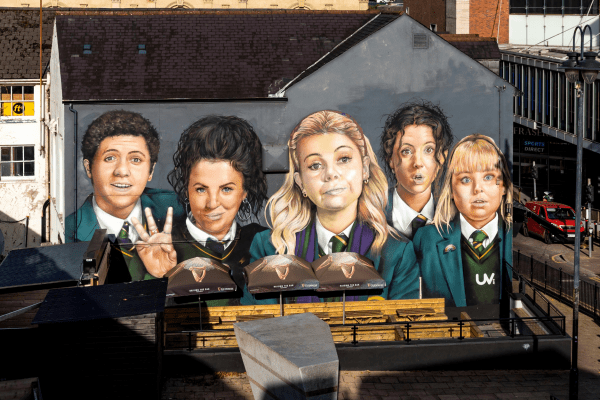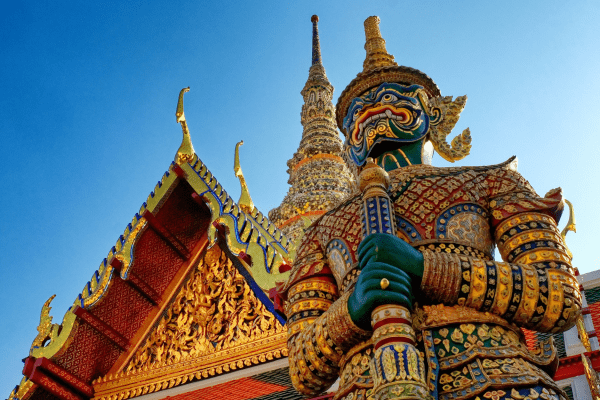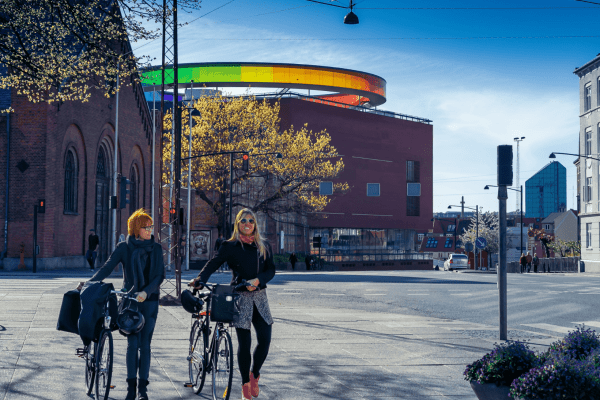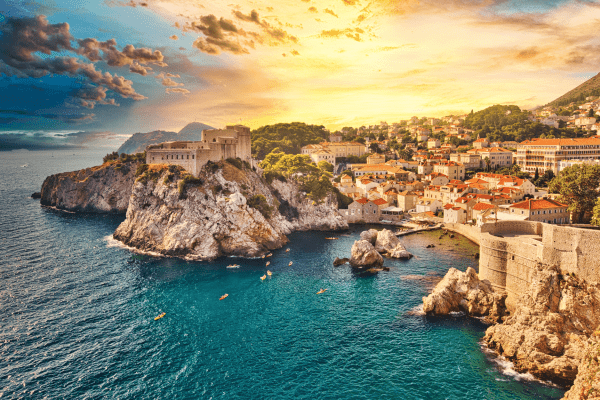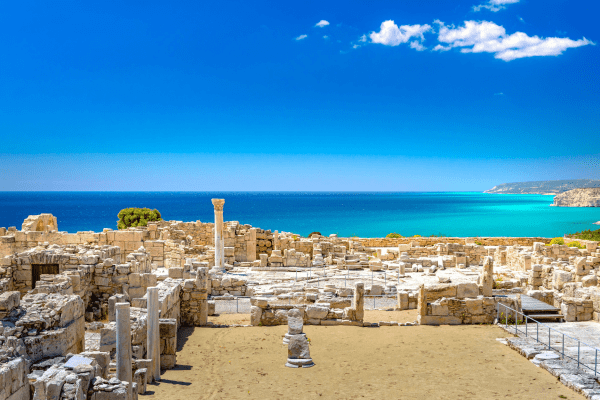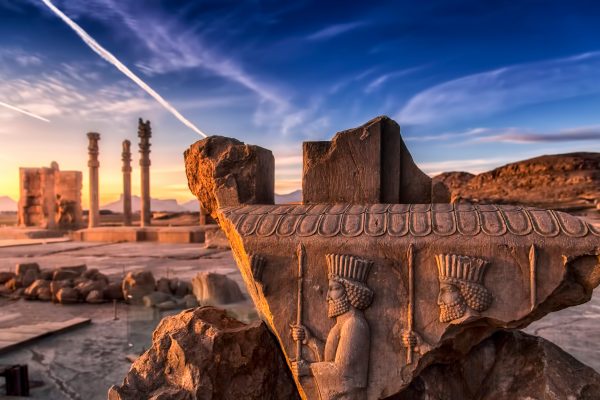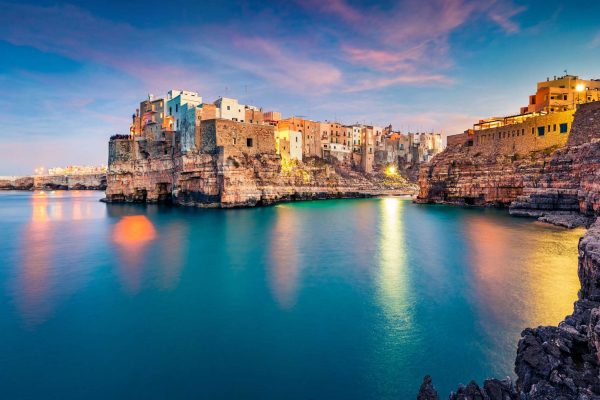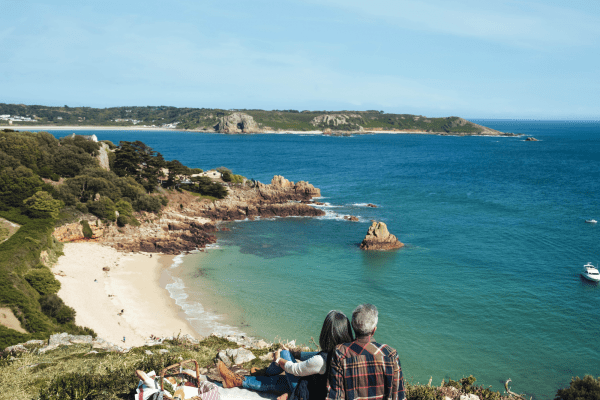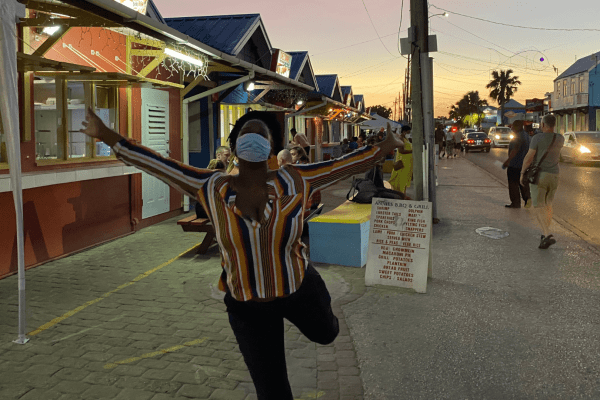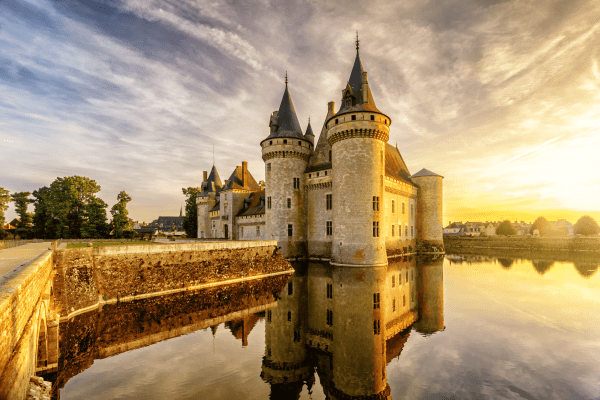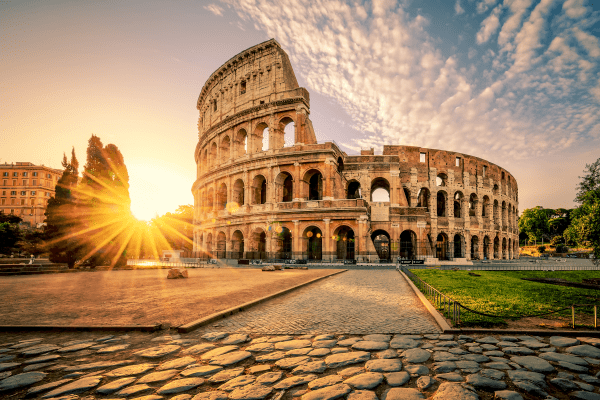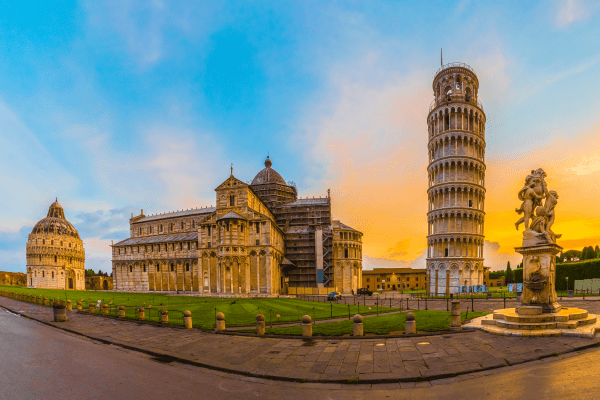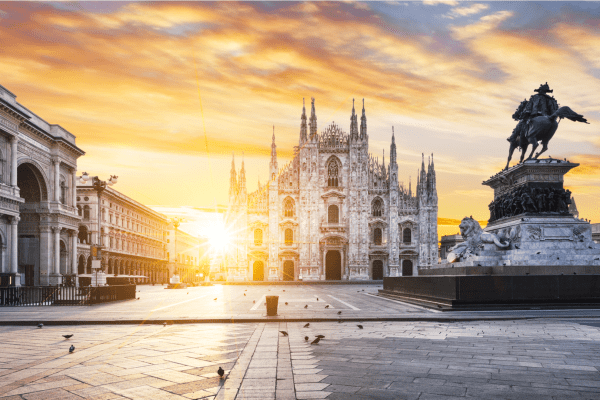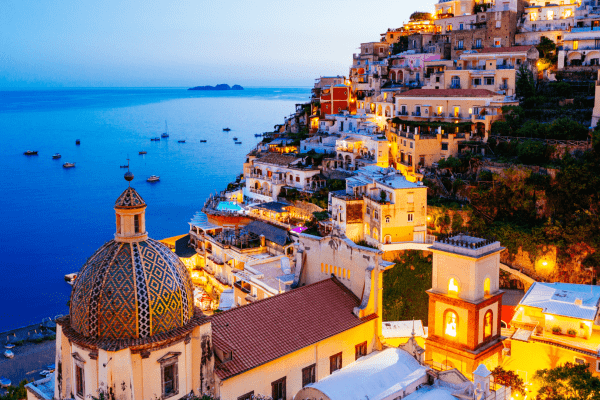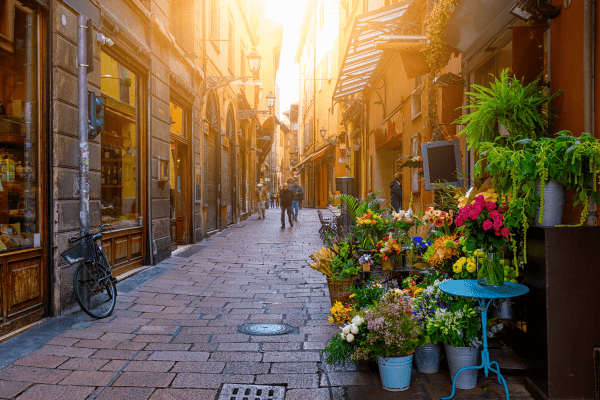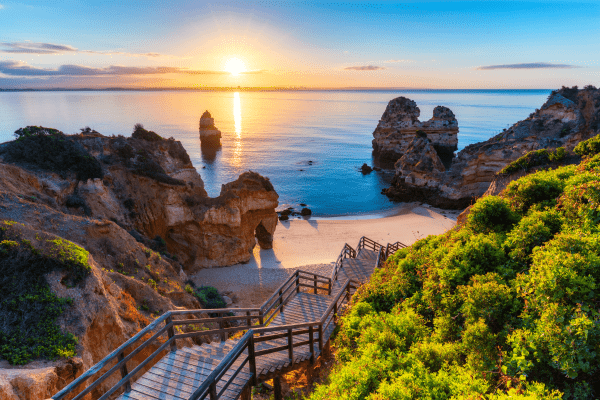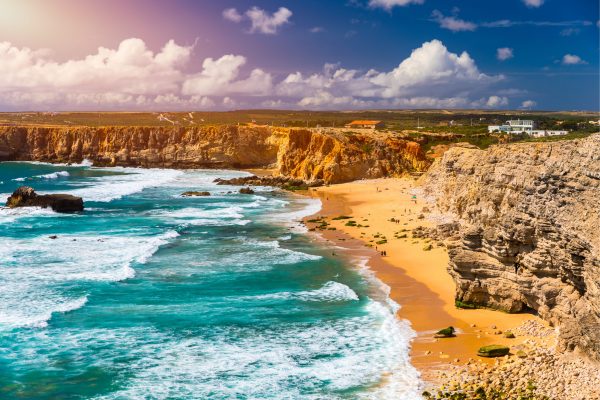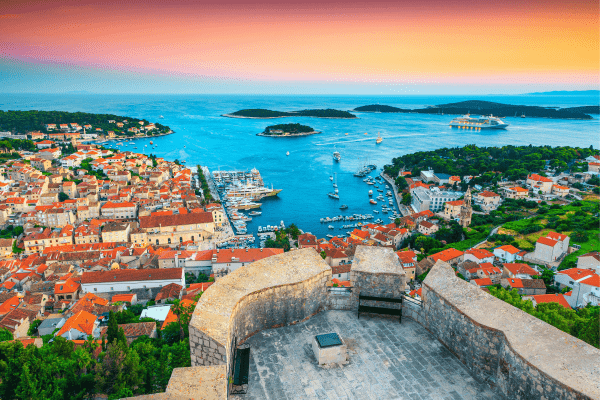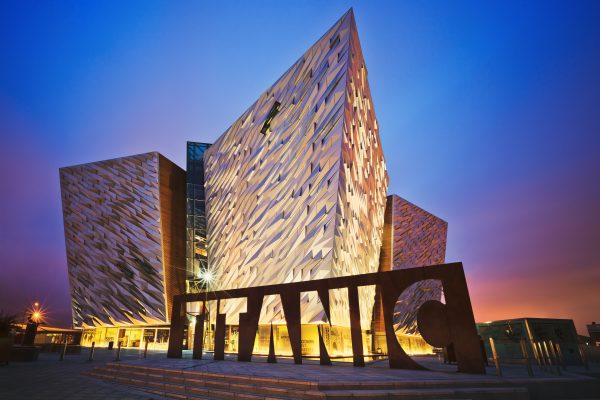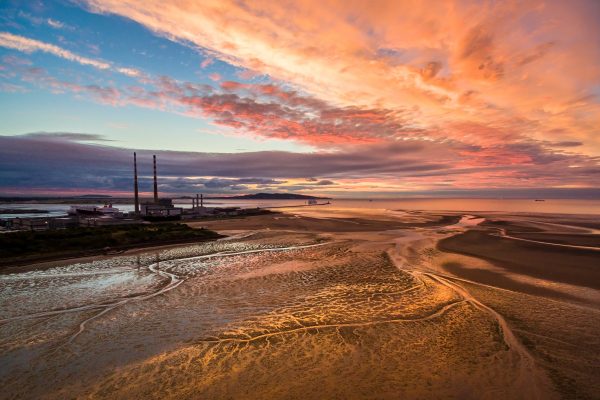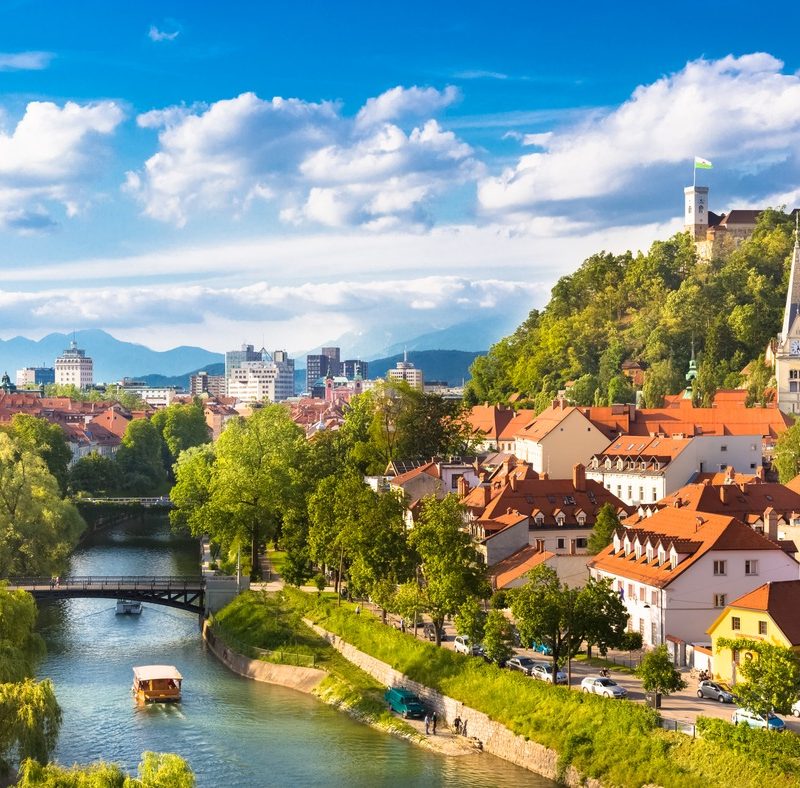Imagine traipsing all the way from Greece, crossing the Black Sea, navigating the Danube, and carrying your ship overland, only to find a lake-dwelling dragon waiting for you. I’ve had better days. Jason, hero of Greek legend, upon finding himself in just such a position, immediately slew the creature, thus founding lovely Ljubljana, and leaving the modern day tourist to ponder the plethora of fire-breathing lizards adorning the city’s architecture, signage and drain covers.
These days, the Slovene capital is a beautiful and safe place, having embraced its unique identity following the breakup of Yugoslavia in 1991. It’s lively, charming and romantic, and despite being the largest city in Slovenia with plenty to see and do, feels wonderfully small. It’s so easy to get around on foot, and as the old centre is completely closed to motorised traffic, this is a great way to explore. The fortunate upside to an 1895 earthquake was the redesign of many neighbours in a classic Art Noveau style thanks mainly to Slovene architect Jože Plečnik.
Low season months in Ljubljana are January, February, March and November. During this time the weather turns cool with rain possible. On the upside, visitor numbers drop, and the city is shrouded in a soft, hazy winter light. The streets and squares of Ljubljana take on a timeless air of mystery, but the year-round feel good atmosphere remains, leaving you to discover all the hidden corners of the city that are usually reserved only for locals.
European Green Capital
In 2016 Ljubljana was recognised for its stance on environmental friendliness. Not only is the cobbled centre fully pedestrianised, public transport is made up of little electric buses and there’s a new cycling network. Both locals and businesses live to the principles of sustainability, which can be seen in their work and play. The city’s creative, artistic and musical soul is evident, not least in the alternative Metelkova Mesto Autonomous Cultural Zone, which was once a barracks, then a squat and now a hotspot for art, bars, events and live music. Ljubljana boasts an impressive 542 square metres of green space per capita. One of the favoured spots to hang out in nature is Tivoli Park with its protected birds, tropical greenhouse and botanical gardens.
Exploring the riverside
At the city’s very heart is the picturesque Ljubljanica River. Walking alongside the water is a lovely way to orientate your explorations. Prešeren Square is a good starting point, and the place when many roads converge. It’s unmistakable with the dramatic pink façade of Baroque Church of the Annunciation and statue of the eponymous 19th century poet Prešeren himself. It’s also here you’ll find the famous triple bridge over the Ljubljanica, crossing to the ornate, colourful cathedral with its stunning dome fresco. Follow to the riverside colonnades with stalls selling all kinds of products to the Dragon Bridge where 4 mythical protectors adorn each corner and check out the lively Central Market, open every day apart from Sunday.

